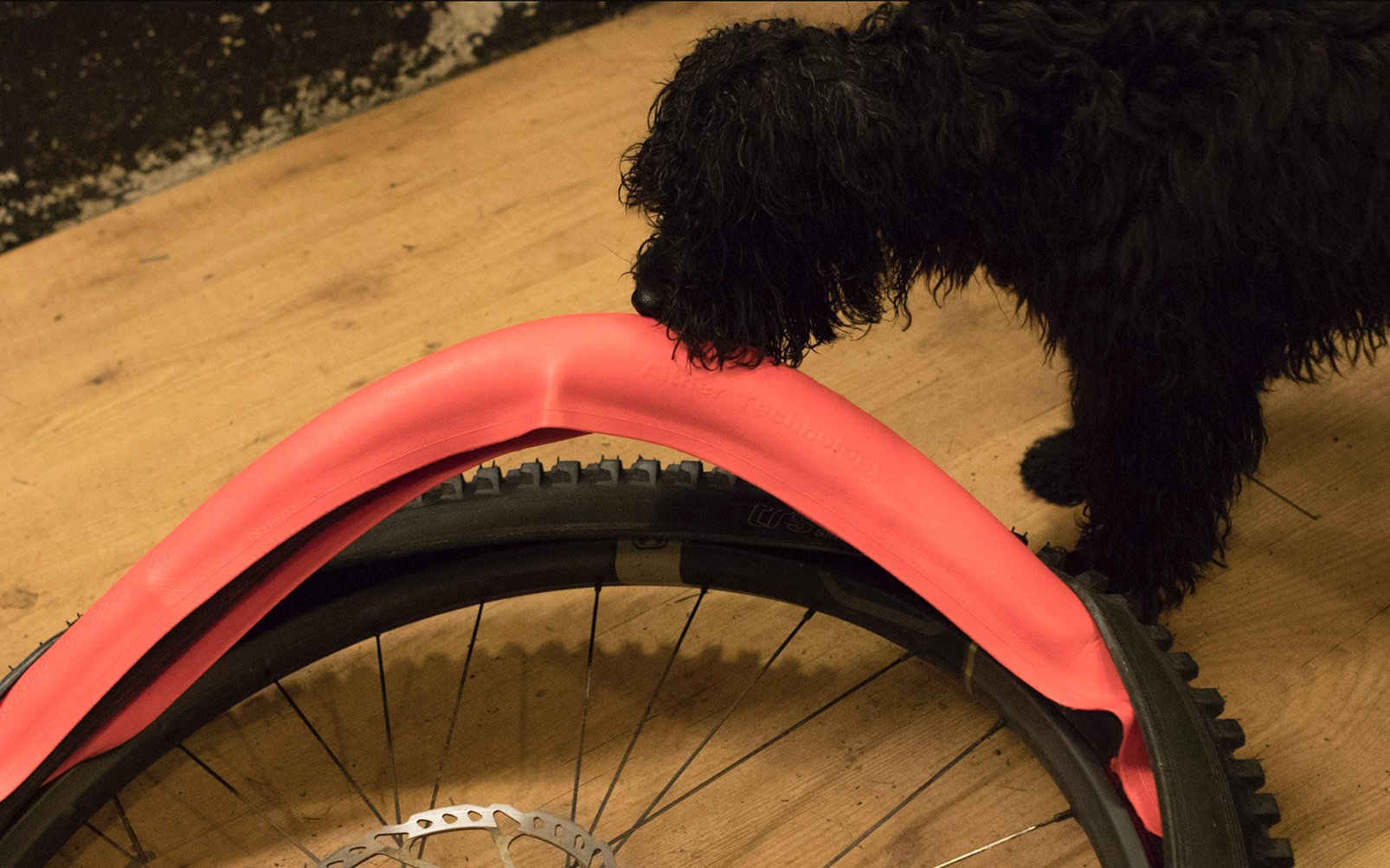
The Burliest Inserts?
A Day on Tannus Armour Inserts
The proliferation of tire inserts on the EWS and World Cup Circuits is a message that many riders have paid attention to. Cushcore wasn't able to sponsor many riders in the beginning because it conflicted with their tire contracts, but they were using them anyway. In gravity racing, keeping air in your tires and keeping your rims functional are mission critical, and inserts provide an undeniable advantage here. The two main contenders are Huck Norris and Cushcore and they take entirely different approaches. Huck Norris is a minimalist solution that floats relatively freely in your tire until there is an impact while Cushcore occupies the bead seat of the rim and presses against the sidewalls as pictured below.

Cushcore, pictured at left, weighs around 250g and it provides sidewall support, damped compression, run flat protection and allows you to run lower pressures along with preventing flats and dings. Huck Norris, at right, weighs a little over 100g and it only aims to protect your rim and prevent flats. Both use a conventional tubeless setup.
Tannus began making a mark in North America with airless puncture proof tires for commuters. Tannus Armour is their first product for the mountain bike market and it takes a different approach entirely. Instead of using a tubeless system, Tannus Armour is inflated with a tube inside it and rather than residing near the rim, the 'Aither' multi-cell foam is pushed out toward the tire by the pressure inside the tube. On the bottom of the tire the foam is 15mm thick while the sides are much thinner at 2mm. An advantage to the system is that your tire doesn't even need to remain intact. You could keep running with a nickel-sized hole in your tire because the tube and the insert together keep things inflated rather than tire and sealant.
Coleman and Sterling from Tannus came to show me the product and help me with the install. Their method put the armour and tube inside the tire before mounting the first side but the video below shows mounting the first side and then inserting the armour and tube.
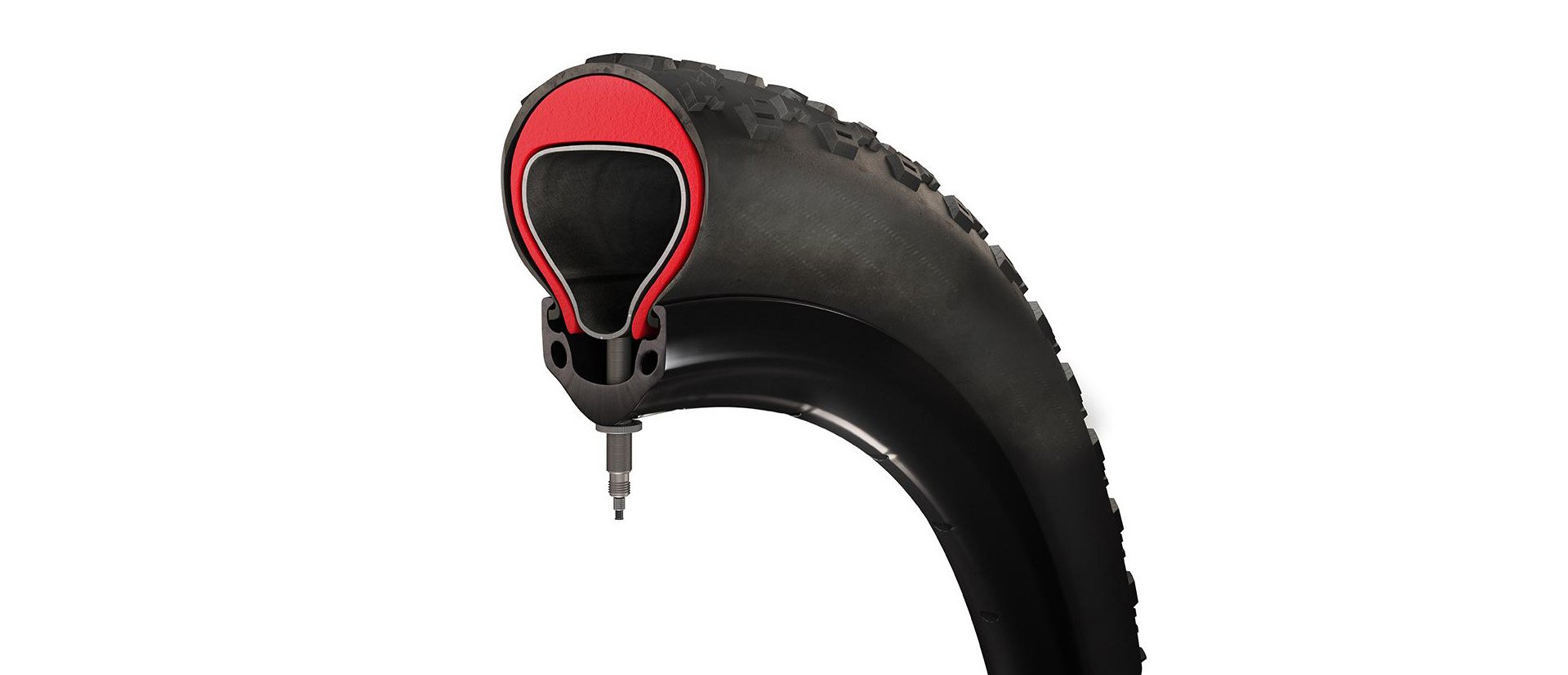
Tannus takes a different approach to the problem.
Mounting the first side was a little tricky with the insert and tube in the tire and installing the second side of the brand new E13 TRSr tire onto the Crankbrothers Synthesis rim wasn't a cinch either, but I managed it without tools or any mounting lubricant in about five minutes. Cushcore is certainly more challenging and Huck Norris is much easier.
I had been off my bike for a week but I found myself riding well on our first descent using Tannus Armour. We were doing what we call a shuttle assist where we drive near the top, climb the rest of the way and then make our way down the rest of the mountain in steps by riding a trail and then climbing up to another. Like snakes and ladders.
You've probably already realized that running lower pressures is no problem with Tannus Armour, but I was surprised to discover that 10 PSI in the tube was entirely adequate for the slow technical trails we were riding because of the structure provided by the system. The feel on the trail is noticeably different from a tubeless system. Everything feels damped and the noise the tires make on the trail is muted as well.
Riding Tannus Armour
The first trail had 15 cms of fresh snow on it so the inserts weren't noticeable aside from the fact I seemed to have really good grip. The next trail was loose loam but not very rough and my bike was railing through the corners but feeling otherwise quite normal.
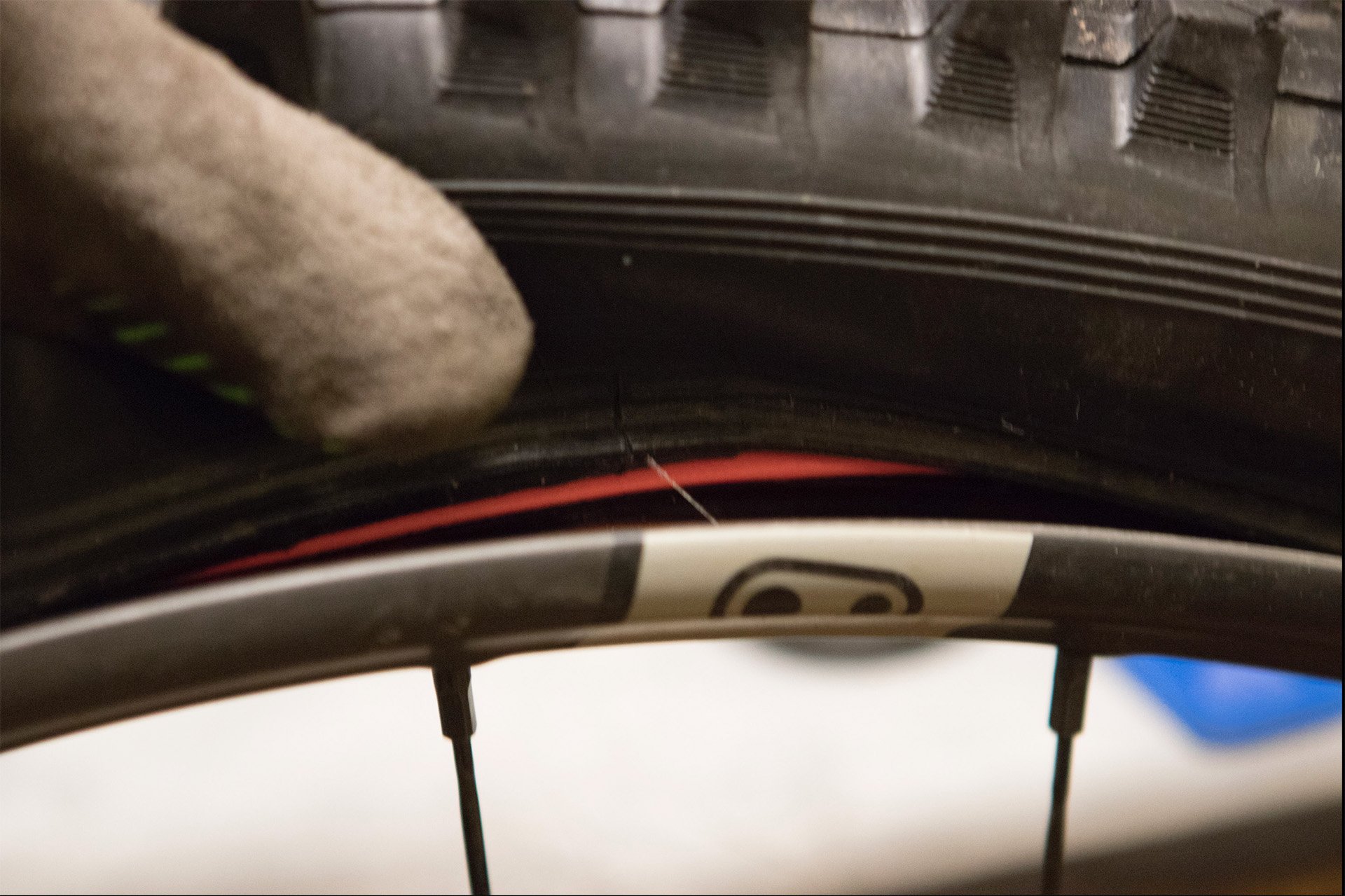
On the Tannus website it says that installation is no more difficult than without the system, which isn't entirely accurate. Removal is a piece of cake however.
Our third and fourth trails changed everything. These were steep lines with rocky, root-laden chutes. Grip was at a premium because it was cold and the trails were wet. To make matters worse I was riding with a couple of faster dudes so I was pushing hard. The funny thing was it didn't feel hard. I had so much grip I felt like I could stop on wet rock faces and even green roots that were shiny enough to see your reflection in seemed covered in velcro. On one steep and angled rock face my friend James, riding plus tires, hugged a notch by the edge so he wouldn't slide on the camber. I rode easily right down the middle, confident in the grip. My tires hugged the ground and seemed to conform even to square-edge hits. This was the secret sauce.
The last trail wasn't as steep but it's punctuated by corners of all descriptions; berms, flat bumpy turns and lots of fadeaways. I know the line well and I found myself on the inside of my usual lines, carving smoothly in the wet with no concern about sliding out despite the slimy conditions. Everything on the descent was better. On the descent...
Once we got to the bottom I rode at a good pace into the curb, with 10 psi in my tires, and I could hardly feel a thing. I went faster and faster, leaning on the handlebars, and at its worst it felt like I was riding over a grapefruit.
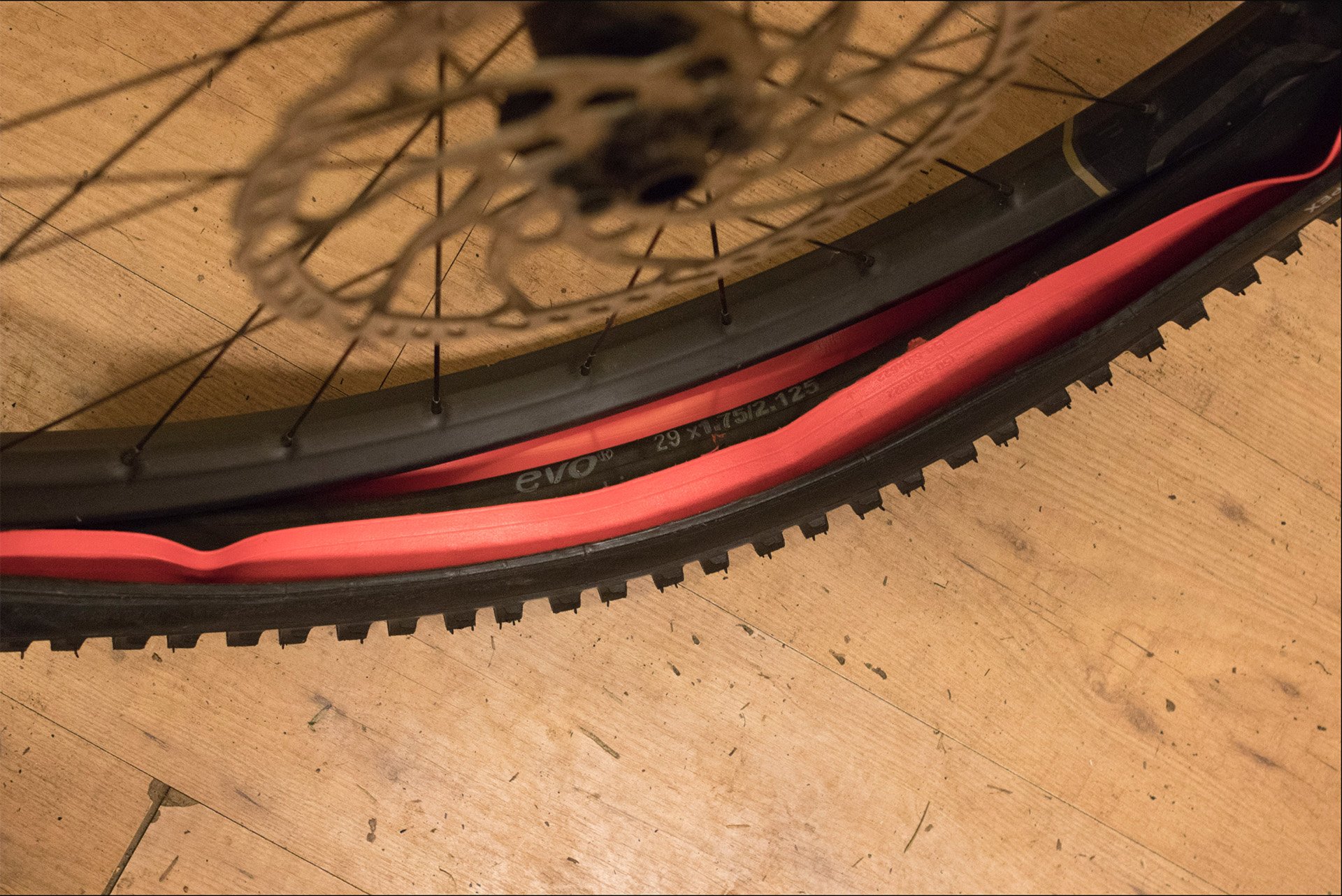
And there is your secret weapon.
A week later I went back and rode the same trails on the same bike but with different tires* and with no Tannus Armour. The first couple of lines were fine but the steep chutes seemed entirely different. Everything seemed steeper and scarier, and I no longer had a Sea Otter hangover. The difference was huge.
*tires went from E13 to Specialized Butcher/Purgatory 2.6 with grid casing.
You may have noticed that I haven't spoken about the aforementioned climbs between descents. Certainly part of the problem was all the late nights and drinks at Sea Otter, but I felt like I was dragging a grizzly carcass uphill. It was instantly clear that the system adds a lot of weight. When I got home I pulled out the inserts and tubes to weigh them. Tannus claims the inserts weigh 320 grams but both versions I tried weigh 330g. That wasn't the surprising part though. The well-protected tubes, which Tannus sells on their web site, are not the DH variety. The system only requires a tube that fits a 1.95" tire, but my scale told me the tubes weigh 239g for a total of 569g. If we say that 90ml of sealant weighs 90g, that makes the difference 479g or 1.05 lbs.
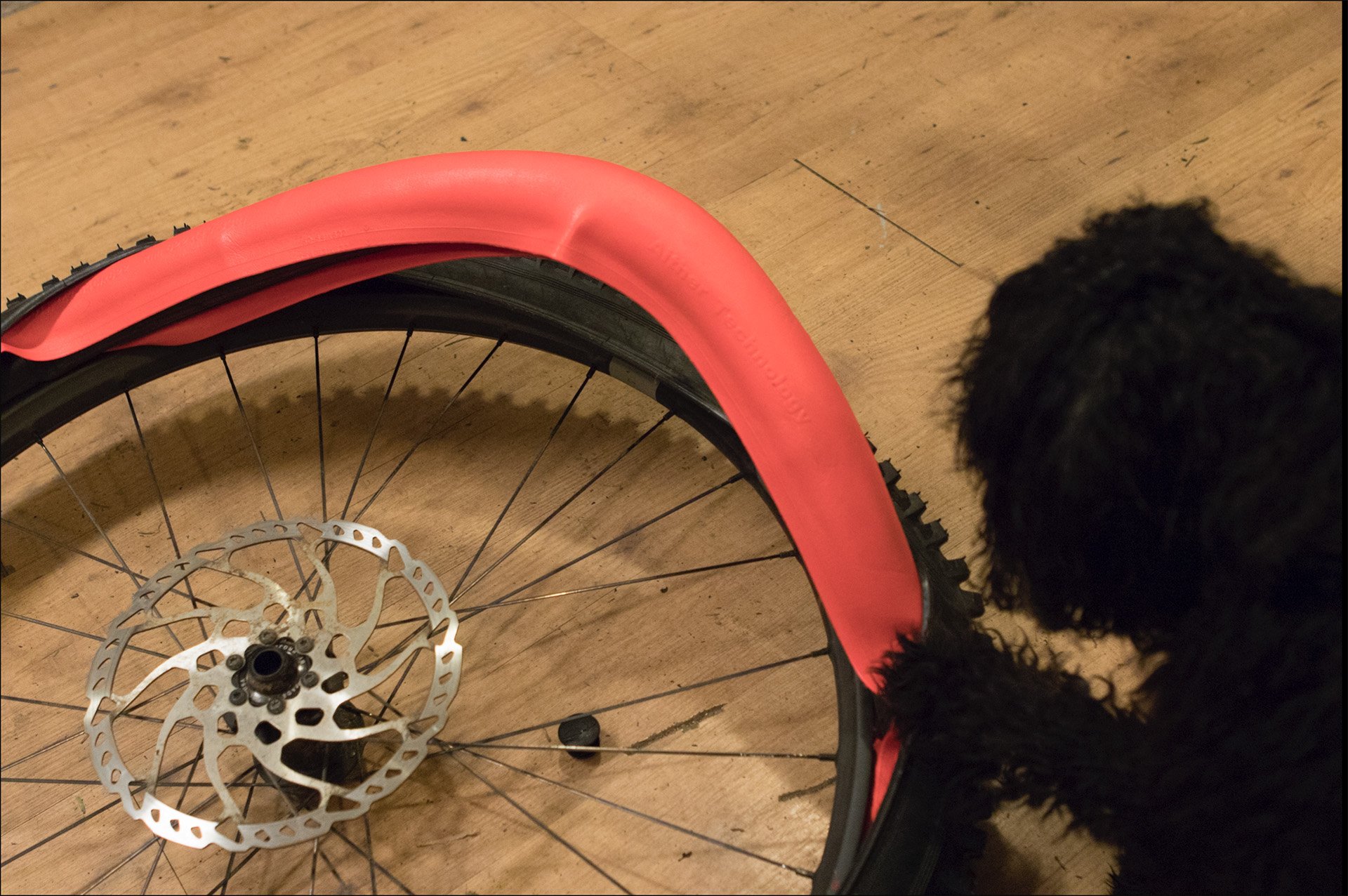
Puppy tough.
If I was riding bike park all the time or only shuttling I wouldn't be very worried about that weight difference. And if I was racing DH on courses without excessive pedalling this system would be a no brainer. In many situations you'd be able to compensate by using a lighter weight tire. DH casings wouldn't likely be necessary except for the heaviest, most aggressive riders or the nastiest terrain.
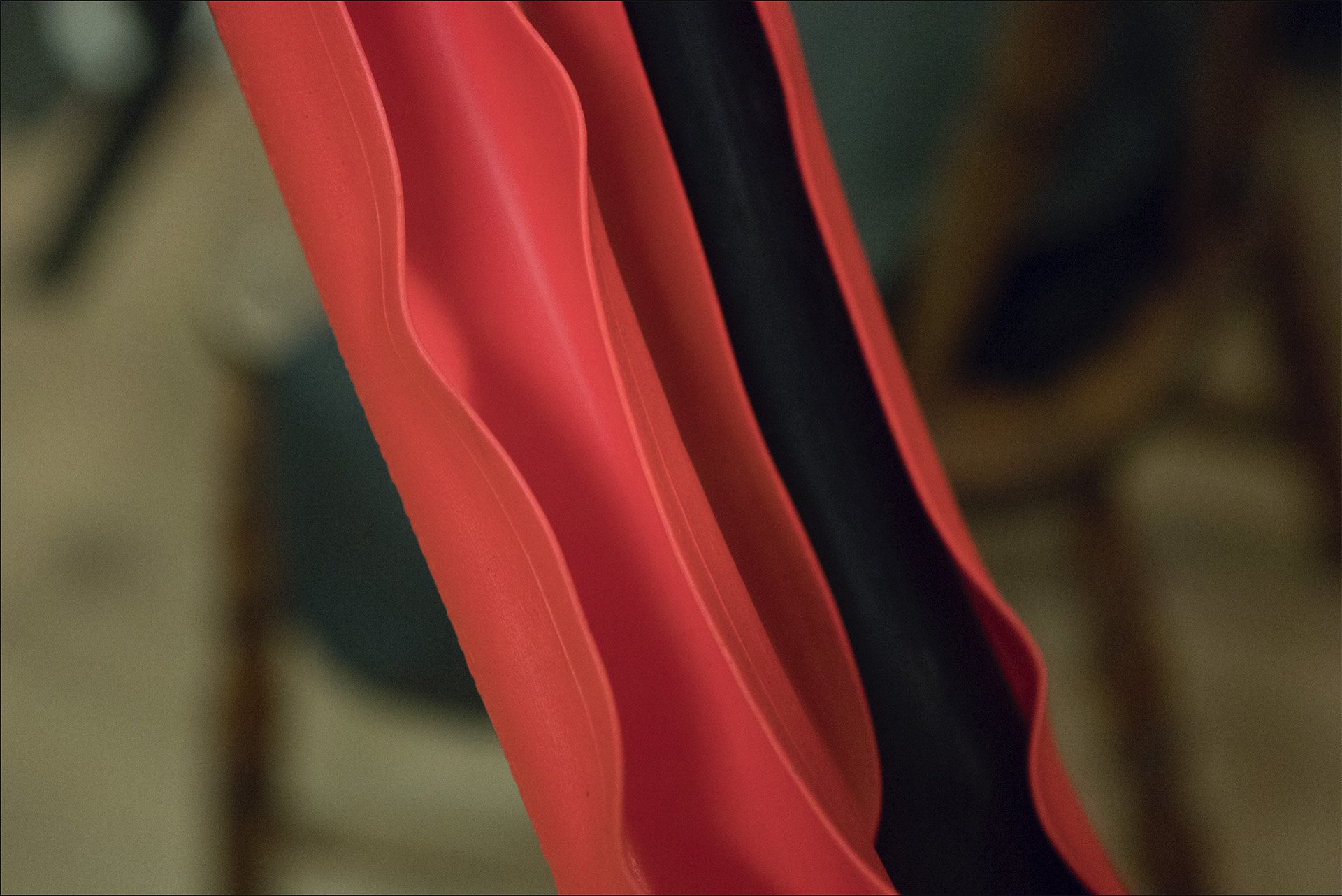
I generally use tires with decent volume on the lower end of the weight scale. EXO casings work fine for me using Maxxis tires, so I don't have much room to save weight there. And I spend a lot of time climbing on my rides, most of which are on Mt. Fromme which can't be shuttled. Add the fact that I'm not a particularly strong uphill rider and the weight penalty, despite the amazing traction, support and protection, becomes a deal breaker. I should add that I'm a mostly reformed weight weenie. I once built up a 26" Specialized Enduro to a smidge under 26 lbs with real tires, but I recognize now that unless we are talking about rolling weight, the performance advantages are minor at best. But keeping your rolling weight down has benefits beyond the significant advantages in climbing speed and effort, like improving suspension performance by reducing unsprung mass.
I have to wonder whether a slightly lighter version of this product could be created. Why not 8mm instead of 15 at the widest part? Or maybe a tube could be integrated so material wouldn't need to be duplicated? What about getting the tire in the act, to remove even more material? Get me down to 150g over my current system and you'd have a believer, as long as the cost is reasonable. And at this point it is reasonable. Tannus inserts cost 40 USD compared to 76 USD for Cushcore (or 149 USD a set with two valve cores) but you'll have to add the cost of a couple of tubes to that.
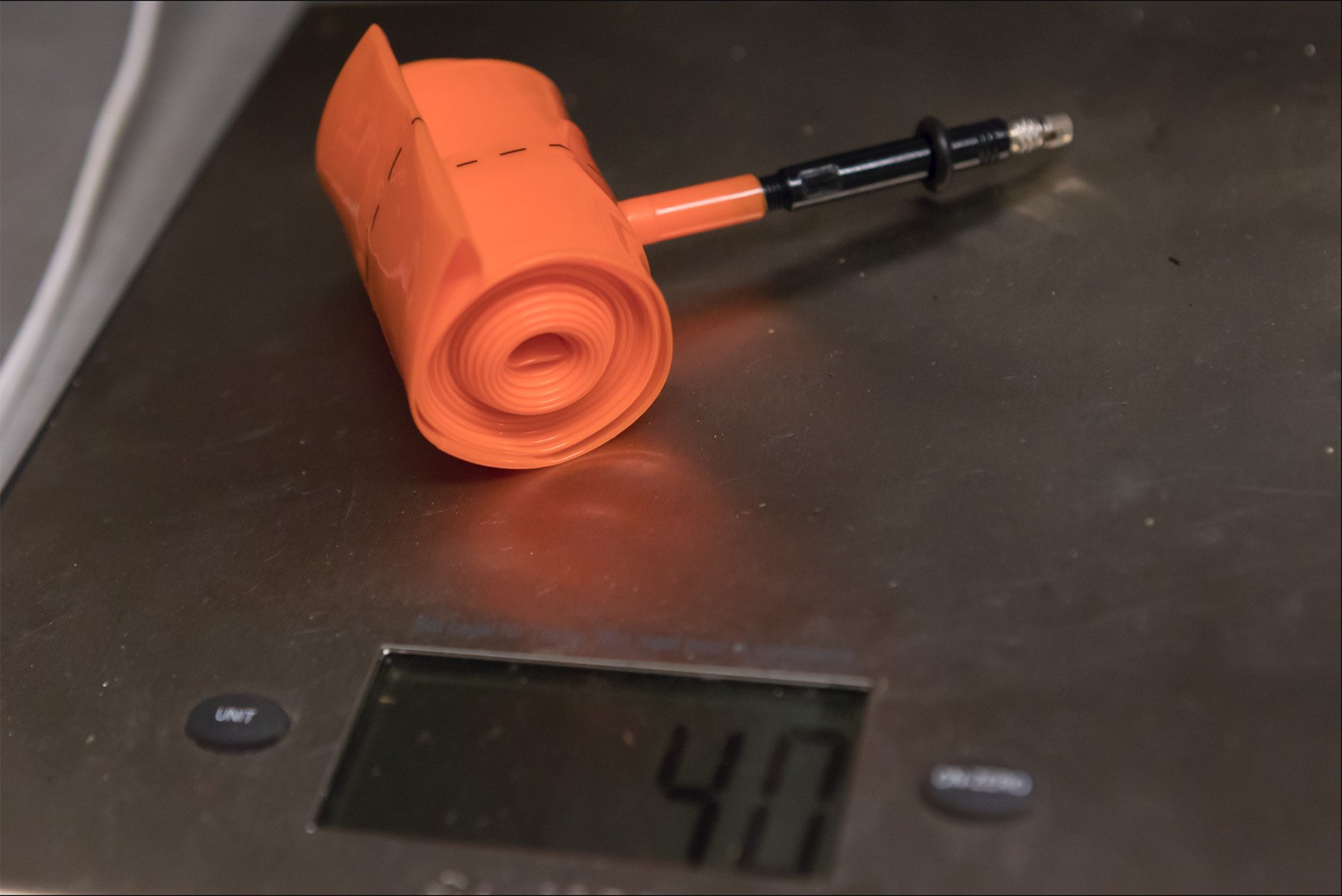
200g of weight savings for 37 USD is actually pretty good value.
Speaking of tubes, this could be an excellent application for Tubolito. The lightest 29er version of the ultra lightweight tubes is listed as 45g but the one I was sent was only 40g on my scale. That would make the system 370g or 280g more than a tubeless system without changing tires. The bad news is that a single Tubolito is 37 USD or almost as much as a Tannus insert. But saving 200g for that money is actually almost impossible (cost out dropping 200g from your cranks or your wheels if you don't believe me) so from that angle they are pretty cheap.
This is an ingenious system with impressive benefits for those who ride steep aggressive terrain or in areas with cactus or heaps of sharp rock, but until the weight comes down the benefits are overshadowed by the increase in rolling weight.
For more check out Tannusamerica.com







Comments
OldManBike
4 years, 11 months ago
If they handed out Pulitzer Prizes for tire-insert reviews, this would be a strong contender, no? Seriously, excellent review.
Reply
Cam McRae
4 years, 11 months ago
Thank you sir!
Reply
Cr4w
4 years, 11 months ago
Now that we've shown the value of these tire liners maybe the tire manufacturers can move towards improving the casing so that these things aren't necessary, and probably for less weight too.
Reply
Perry Schebel
4 years, 11 months ago
dh tires for all!
Reply
ackshunW
4 years, 11 months ago
Cam-
Great review. I’ve been interested in these as soon as I heard about them. When you talk about climbing on these being a chore, is it all weight or does that traction result in a bunch more rolling resistance too?
Eric
Reply
Cam McRae
4 years, 11 months ago
Thanks Eric.
I don't think rolling resistance was much of an issue, but I was on tires that are considered by some to be slow rolling - the E13s. At least I didn't feel that it was. I think it was more about the weight.
Reply
Kieran
4 years, 11 months ago
Awesome. I've been waiting for a good review of this system. Thanks Cam.
Take my money Tannus.
Reply
Metacomet
4 years, 11 months ago
Very nicely written review. The system sounds super intriguing, and I'm almost certain I'll give it a shot at some point in the near future.
One quick question. Did you notice a difference in the rolling resistance/speed when on flat or rolling sections, or situations when grip wasn't a priority? Such as a jump line or rolling section where pumping and carrying speed is paramount. With cushcore, I notice no loss in rolling speed in these types of situations, and if anything they may roll a little faster and carry momentum better. Did you ever feel like the Tannus insert was increasing rolling resistance at all due to the way the foam conforms to the ground?
Reply
Cam McRae
4 years, 11 months ago
Thanks Meta!
I guess if everyone has the same question it's something I should have addressed!
Once up to speed I didn't notice the weight very much - pumping and rolling didn't seem noticeably different - and I think your observation about Cushcore stands here as well. When the tires conform so effectively to low frequency impacts they tend to slow you down less than usual.
Moving the bike around and over obstacles wasn't much more of a chore, but getting quickly up to speed was more difficult.
Reply
cyclotoine
4 years, 11 months ago
Ha. After I read about these on here the other week I immediately started searching lightweight tubes and discovered Tublito. I agree if they could make a 150g version, plus 40-gram tube, less 80 grams for sealant, less 4g (?) for the valve stem and you're looking at a weight penalty of 106g? That would be acceptable.
Do you think the extremely low pressure was also a factor in climbing rolling resistance?
Reply
Cam McRae
4 years, 11 months ago
The thing about the 10 PSI in the tires is that they didn't feel soft with the squeeze test because of the inserts. The insert gives the tire shape and support so it takes an impact to cause it to deform. Absolutely you could run higher pressure and likely get better roll, as well as choosing less aggressive rubber, but the sluggish climbing I felt was consistent on dirt and pavement, which is another factor which leads me to believe that rolling resistance wasn't a significant factor.
Reply
[user profile deleted]
4 years, 11 months ago
This comment has been removed.
Brigham_Rupp
4 years, 11 months ago
Good stuff. How do they compare to Cush Core? That’s the main question to me.
Reply
Please log in to leave a comment.